There are three classes of fishes:
- Class Agnatha (Jawless fish)
- Class Chondrichthyes (Cartilaginous jawed fish)
-
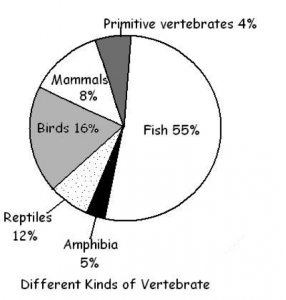
Figure 1: Relative vertebrate biodiversity Class Osteichthyes (Bony fish)
FISHES
General characteristics of all fishes (class Agnatha, class Chondrichthyes, class Osteichthyes)
- Gills
- “Water breathing” through gills which are modified pharyngeal slits. (gas exchange between water and blood).
- Gills can absorb lower concentrations of available oxygen.
- Water is forced across the gill membranes, dissolved oxygen in the water is taken up by blood vessels and veins, while the carbon dioxide is exchanged.
- Most fish use buccal pumping (“breathing with ones cheeks”) to force water past their gills (ex. Opening mouth to take in oxygen, closing mouth and raising floor of the mouth)
- Some use ram ventiliation -> Swimming with an open mouth “rams” water past gills.
- “Gulping” air at the surface in low O2
- We will explore gill structure in a future lab.
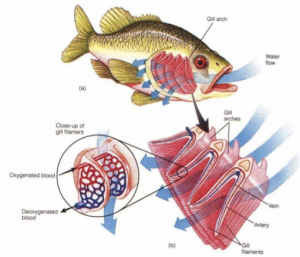
(http://www.todayifoundout.com/wp-content/uploads/2011/09/fish-gill.jpg)
- Lateral Line
- A row of sensory structures along the side of the body which sense vibrations in the water (Like a “sixth sense” for fish!)
- Mechanoreceptors arranged in network along the head and body. Sensitive to pressure gradients.
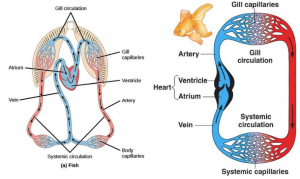
Figure 3: Circulatory system in fish
- Circulatory system
- Two chambered heart with single circulation.
- 1 atrium, 1 ventricle separate by a simple valve.
- Draw in deoxygenated blood in a single atrium and pump it out through a ventricle.
- Heart -> Gills (where gas exchange occurs i.e. gets oxygen, gets rid of CO2) -> Body -> Heart
Class Agnatha (Jawless fish)
General Characteristics:
- Predicted to be the first vertebrates -> oldest known fossils/most similar to lancets, tunicates. (~550 million years ago)
- Have no fins, no scales, and no jaw.
- Skeleton of cartilage (firm, flexible tissue not as hard as bone)
- No true vertebrae, -> supported by a notochord (the only vertebrates without vertebrae)
- Examples: Lamprey, hagfish
Lampreys
-
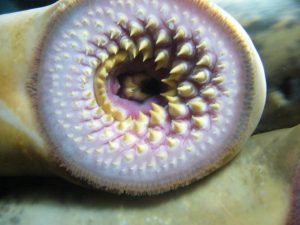
Figure 4: Lamprey mouth Many are parasitic.
- They attach to host with a round sucking disk
- Many rows of teeth scrape away flesh and suck up blood, fluids of the host.
- Live in fresh and salt water.
- Born in streams and spend many years filter feeding on algae etc. Adults migrate to sea or lakes and feed on host organisms. Lamprey return to streams to spawn and die.
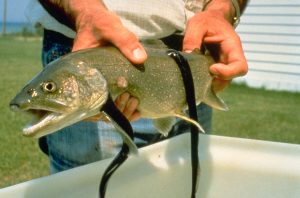
Lamprey Digestive System:
- Lampreys have a very simple digestive system
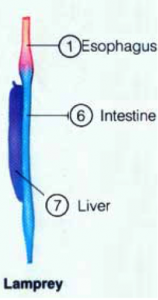
Figure 6: Lamprey digestive system - Not much more than a esophagus and intestine
Question: Why do you think lampreys have such a simple digestive tract?
Hagfish – vertebrates?
- Currently part of phylum Agnatha
- However, they have no vertebrae (no support at all)
- No eyes and 6 hearts
- Secrete massive amount of slime as defense
Question: Do you think hagfish should be considered a vertebrate?
Extra Questions:
- What is meant by “single loop” circulatory system?
- What is the difference between atria and ventricles?
- What three characteristics are found in all fishes?
- Give an example of a fish species that: 1) Uses buccal pumping, 2) Ram ventilation and define these these methods.
- What is happening physiologically when a lamprey moves from salt water to fresh water? (i.e. what is something that needs to be dealt with).
- Describe the lateral line and state its function.
- Compare a lamprey (class Agnatha) to a shark (class Chondrichthyes) – what is similar? What is different? Can you think of any major advancement between the two?
- How do hagfish defend themselves?
Comments by shaun pletsch